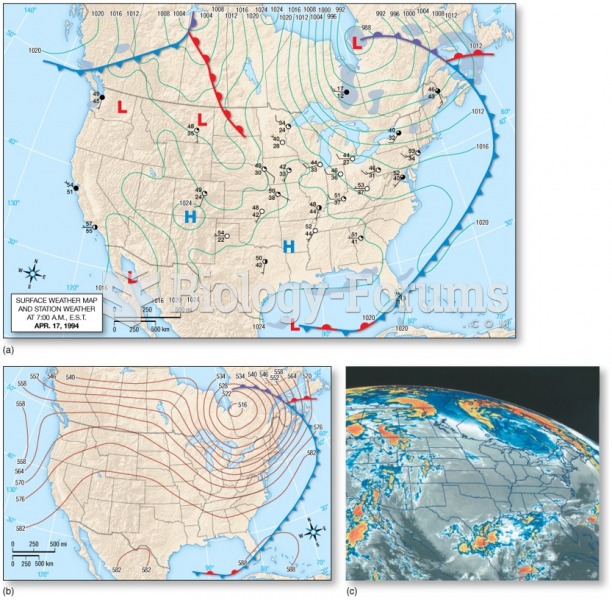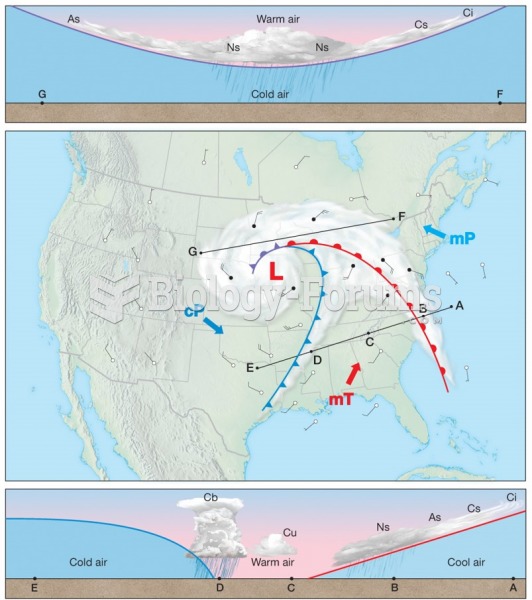Answer to Question 1
ANSWER: Similarities: both have central cores of low pressure and winds that spiral counterclockwise about their respective centers (Northern Hemisphere). Differences: A hurricane derives its energy from the warm water and the latent heat of condensation, whereas the midlatitude storm derives its energy from horizontal temperature contrasts. The vertical structure of a hurricane is such that its central column of air is warm from the surface upward; consequently, hurricanes are called warmcore lows. A hurricane weakens with height, and the area of low pressure at the surface may actually become an area of high pressure above 12 km (40,000 ft). Mid-latitude cyclones, on the other hand, are cold-core lows that usually intensify with increasing height, with a cold upper-level low or trough often existing above, or to the west of the surface low. A hurricane usually contains an eye where the air is sinking, while mid-latitude cyclones are characterized by centers of rising air. Hurricane winds are strongest near the surface, whereas the strongest winds of the mid-latitude storm are found aloft in the jet stream.
Answer to Question 2
ANSWER: Detailed information about a hurricane can come from aircrafts that fly directly into the storm. These so-called hurricane hunters carry instruments directly on the aircraft as well as instruments, such as the dropsonde, that are dropped from the aircraft into the storm. On its way down to the ocean surface, the dropsonde measures air temperature, humidity, and atmospheric pressure, which are transmitted back to the aircraft. Because the dropsonde is equipped with a Global Positioning System (GPS) that constantly monitors its changing position, it has the capability of providing wind information as well. Another temperature-measuring device dropped from the aircraft is the bathythermograph, which falls into the ocean where it measures water temperature as it slowly descends beneath the surface. Other probes dropped into the sea measure the speed of ocean currents and the salinity (saltiness) of the water, an important factor in determining water density.







